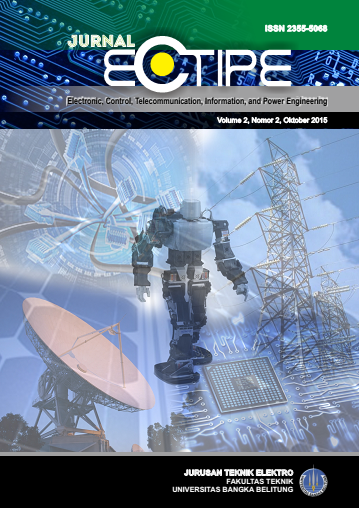MODELING OF ELECTRIC SYSTEMS OF HYBRID DIESEL GENERATOR AND PHOTOVOLTAIC ARRAY USING THE HOMER SOFTWARE (Case Study at Semujur Island of Kabupaten Bangka Tengah)
DOI:
https://doi.org/10.33019/ecotipe.v2i2.35Keywords:
Diesel Generators, HOMER, Hybrid Power Plants, Photovotaic ArrayAbstract
Hybrid system is one way in saving the use of petroleum fuels with solar power generating systems apply settlement in Semujur island where it is currently available diesel generator in operation for 3 hours/day with an average power in each house of 178.8 Watt by using a hybrid system modeling software HOMER 3.2.3 the calculation of the cost for the operation the hybrid system. Results of the simulation HOMER that potential energy produced by the photovoltaic array system with lowest solar insolation values on Semujur island amounted to 3.99 kWh/m2/day with renewable fraction in the photovoltaic array system configuration by 34% generating electrical energy by 15515.01 kWh/year with diesel fuel savings of 64.3% of total oil consumption currently operates its own diesel generator spend net present value cost (NPC) Rp 1.143.972.000 and cost of energy (COE) 3,380 Rp/kWh and has advantages sufficient electrical energy for the growth of a population 7 houses in the future.
Downloads
Downloads
Published
Issue
Section
License
Copyright in each article is the property of the author.
- The author acknowledges that the Jurnal Ecotipe (Electronic, Control, Telecommunication, Information, and Power Engineering) has the right to publish for the first time with a Creative Commons Attribution 4.0 International License.
- The author can enter the writing separately, regulate the non-exculsive distribution of manuscripts that have been published in this journal into other versions (for example: sent to the author's institution respository, publication into books, etc.), by acknowledging that the manuscript was first published in the Jurnal Ecotipe (Electronic, Control, Telecommunication, Information, and Power Engineering);

















